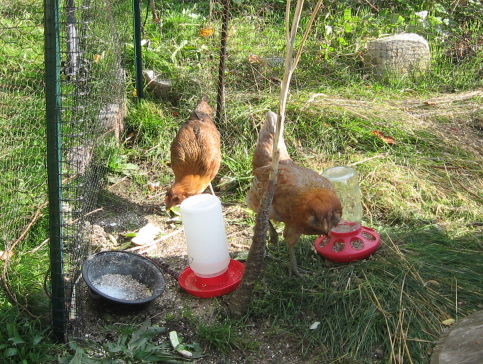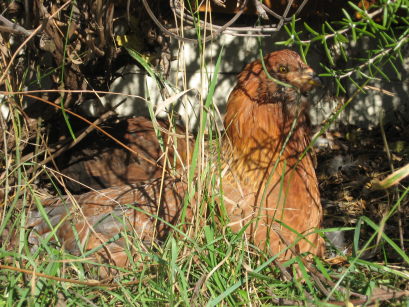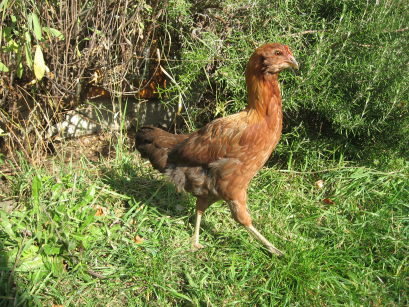

Right after Christmas, Amie and I headed up to a cabin near Mazama that my dad had reserved, and a group of us spent a few days there snowshoeing and Nordic Skiing. Nordic (a.k.a. Cross-Country) skiing was pretty new to me; I rented some "classic" Nordic skis and we headed up to the Cub Creek trailhead a few miles NW of Winthrop. The trail was well-groomed and our skis glided easily in the established track. We made it about half way to Rendezvous Pass, ate lunch, and then headed back downhill. Going downhill on Nordic skis was a bit of a challenge; Nordic skis do not have metal edges, making it more difficult to use the snowplow maneuver to slow or stop. I enjoyed Nordic skiing quite a bit, and it got me thinking about trying other forms of free-heeled skiing.
So, right after New Years Day, Amie & I went up to the Bremerton Ski Cruisers cabin, of which Amie is a long-time member. I thought I would take this opportunity to try Telemark skiing, another type of free-heeled skiing. Amie is an experienced Telemarker, and showed me how it's done. The challenging thing about Telemarking is that it is easy to cheat and just revert to parallel-style skiing, so I had to work hard to be sure to sink my knees and shift my weight to the uphill ski during turns. By the end of the day, I was gliding down the intermediate runs making decent tele turns.
After I become more proficient at Telemark and able to make tight turns in deep powder, I would like to get off the groomed runs and try backcountry skiing.
December 21, 2008
We measured 11" of snow accumulation at our house in Rainier Valley last night. See photos.
Snow Stats


The first project was more of an experiment. Our house is wired throughout for cable TV, there is even a line out to the barn out back. However, we don't watch TV and the internet comes over a DSL line, so this coaxial cable infrastructure was lying useless in our house. My hope was to be able to use the cable-TV lines to transmit S/PDIF digital audio from the studio in the barn into various locations in the house, this way we could have have one thing playing in the barn and have it relayed into other rooms in the house in real-time. A Google hunt did not yield any decisive information on the subject, so an experiment was in order. S/PDIF is a digital audio transmission format that can run over coaxial cables; most modern higher-end audio equipment has a standard S/PDIF connector for connecting to other equipment. With a pair of cable-TV to RCA-type converters ($3 each) from Radio Shack, I plugged a S/PDIF source (M-Audio Firewire Audiophile) into the cable jack in the barn and a S/PDIF decoder (M-audio Super DAC 2496) into the jack in the living room. All of the cable lines are routed into a splitter located on an exterior wall; at the splitter I disconnected the input cable coming in from the pole. The first test run didn't work; the signal wasn't getting through the splitter. I then went back to the splitter and connected the barn line into the INPUT connector. After that modification, success! The living room stereo was now playing the music coming from the barn, loud and clear. Conclusion: An S/PDIF audio signal can successfully be transmitted over ~150' of standard Cable-TV wire including a run through a splitter. Further testing will be needed to see if multiple decoders can be connected and receive the signal simultaneously.
The second project was to install a motion-sensor switch in the basement. The basement previously had 3-way switches controlling the light, but the two switches were in inconvenient locations and we would frequently leave the light on all day and night because there was no way to tell from upstairs when the lights were on. The solution was to install the motion-sensor switch in a strategic location so that the light would turn on automatically when anyone (including possibly the cat) entered the basement from either door, and then turn off after a set period of time after said person (or cat) leaves the basement. I picked up nice switch from Ecohaus to do the job, but the wiring the switch was going to be bit of a project. With Amie's help, I first had to decipher the existing 3-way switch wiring and disconnect it such that it provided juice continuously to the light fixtures in the basement. I then had to figure out which of the 4 fixtures in the basement was the one that received the supply line; fortunately it turned out to be the fixture closest to my proposed switch location, so I only needed 6' of 3-conductor cable to wire in the switch. I intercepted the supply line at the fixture and ran the cable to a new junction box where the new switch would go. A difference with this switch over a typical switch is that it requires a neutral wire, hence the need to use the 3-conductor wire run to the switch. After completing the wiring, I restored the power at the breaker. The switch worked beautifully on the first try.
October 24, 2008
Chickens: Past and Present

Back in August, Amie and I got a pair of chickens. They were cute little fuzz balls, just a week old when we got them. We named the pair Walnut and Cashew. They are purebred Ameraucana breed. Over the fast few months we have been raising them in the back yard and have been enjoying their cute and mischievous antics. Felix watches them all day and sometimes chases them around the yard. They love hanging out with us and it is a challenge to keep them off the patio and the patio free of chicken poop.
Unfortunately, the chicken coop was raided by raccoons a couple weeks ago. Cashew did not survive but Walnut reappeared the next morning. She was lonely without her sister, they were inseparable and always stuck together while wandering around the yard, so last weekend we browsed Craigslist for a teenage hen to replace Cashew. We located an available one in Lake Forest Park and went to go pick her or him up; at this age we can't really tell if she/he is going to be a female or male. We're hoping for another hen, so we're just going to call her a she until otherwise corrected. We brought the new chicken home and she immediately proceeded to get into a minor tiff with Walnut and then run wild around the yard. While Walnut is quite accustomed to hanging out with people and being picked up, and tolerates the cat, the new chicken will have none of that. We named her Shi Shi both because she is half Japanese Phoenix breed (the other half Ameraucana link Walnut) and also because of her high-strung nature that will apparently require a little more maintenance on our part. Shi Shi is also skinnier than Walnut, and to our surprise quite capable of flight. Felix thought that Shi Shi was much more entertaining to chase than Walnut, and on the first day this resulted in Shi Shi flying over our fence into the street and into a neighbors' yard. We then introduced ourselves to our new neighbors and retrieved our chicken after much squawking.
The next day, we beefed upped the coop and clipped Shi Shi's wings to prevent further escapes. Now Walnut and Shi Shi seem to be getting along better and Shi Shi is getting more accustomed to our yard. They hang out together, like Chickens do, but the equilibrium is easily upset. We'll see how things are going after a few weeks.


© 2008 Owen Kehoe
Route feedback to: